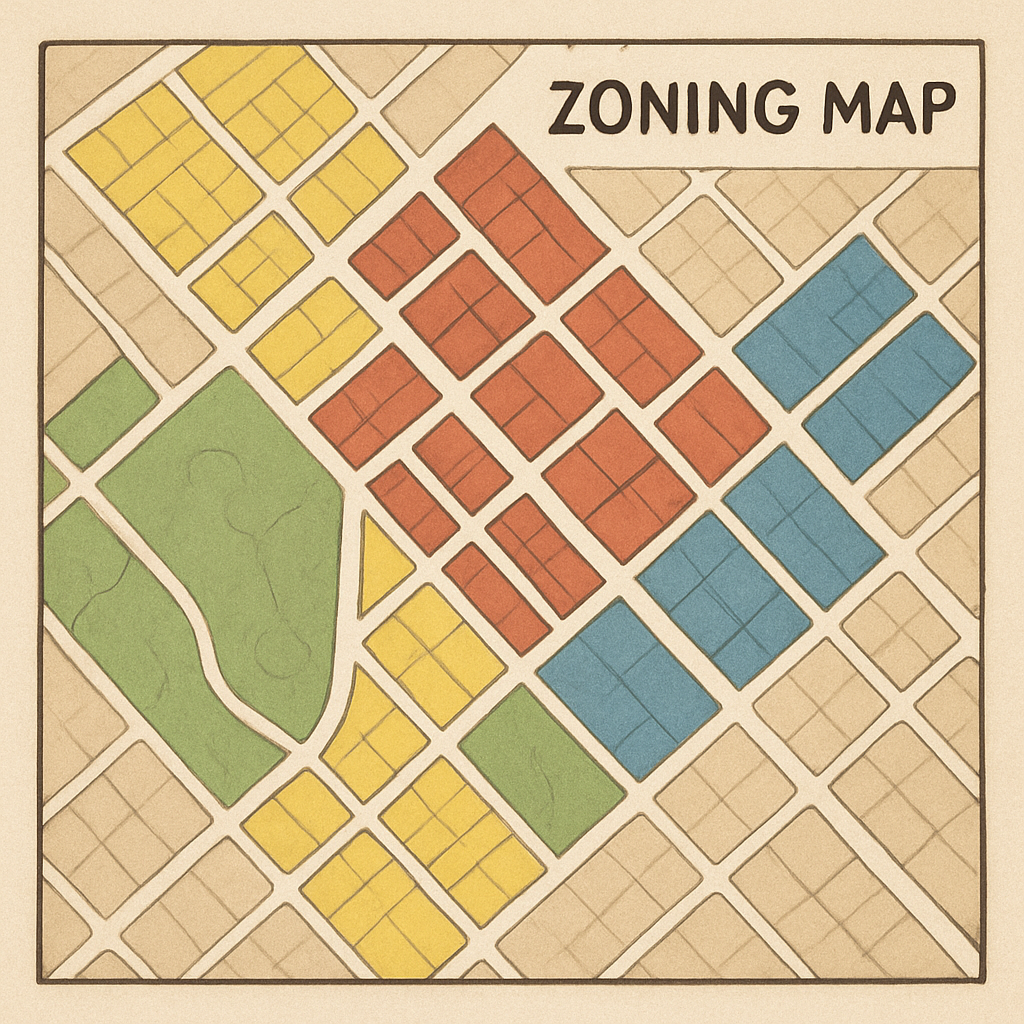Before delving into the permit process, it’s essential to familiarize yourself with local zoning regulations. Zoning laws dictate what can be built and where, affecting everything from the height of a building to its purpose. Understanding these regulations early can save time and prevent costly mistakes down the line. It is critical to engage with local zoning maps and municipal planning documents, which provide detailed insights into what is permissible on your property.
Why Zoning Matters
Zoning regulations ensure that land use is organized and harmonious within a community. They help maintain property values, manage traffic, and protect environmental resources. By establishing clear guidelines, zoning laws also mitigate disputes between neighbors, fostering a community that respects each other’s space and purpose. Knowing the zoning laws relevant to your project can influence your design decisions and ensure compliance. Additionally, understanding these regulations can inspire innovative design solutions that align with community goals, potentially enhancing the value and appeal of your project.
The Permit Process: An Overview
Getting a building permit involves several steps, each requiring attention to detail and adherence to local guidelines. From initial design to final approval, here’s a breakdown of what to expect. The process may vary slightly depending on the locality, but the core elements remain consistent, ensuring that all construction meets safety and quality standards.
Step 1: Initial Project Planning
The first step in the building permit process is thorough project planning. This includes defining your project’s scope, setting a budget, and considering timelines. Engaging professionals, such as Sumer Innovations architects or engineers, can provide valuable insights during this phase. Their expertise can help identify potential challenges early, allowing for adjustments before significant resources are committed. Moreover, involving professionals from the outset can streamline communication with local authorities, as they often have established relationships and understand the nuances of local requirements.
Step 2: Creating Architectural Plans
Architectural plans form the backbone of your permit application. These detailed drawings should include all aspects of the proposed construction, from layout and dimensions to materials and finishes. For a successful submission, consider using engineer-stamped drawings that demonstrate compliance with building codes. These plans not only ensure that your vision is accurately represented but also facilitate a smoother review process by clearly articulating how your project adheres to all necessary standards. Additionally, well-crafted plans can serve as a valuable tool during construction, guiding contractors and ensuring that the build aligns with the approved design.
Step 3: Developing a Site Plan
A site plan is a detailed map of your project site, showing existing structures, proposed changes, and any relevant topographical features. This document is crucial for demonstrating how your project fits within the existing landscape and adheres to zoning regulations. A comprehensive site plan also addresses logistical considerations, such as access routes for construction vehicles and potential impacts on neighboring properties. By clearly illustrating how your project integrates with its environment, you can preemptively address concerns from the community or local planning bodies, smoothing the path toward approval.
Essential Documents for Your Permit Application
When applying for a building permit, you’ll need to provide specific documents that demonstrate your project’s compliance with local codes and regulations. Here’s a checklist of essential documents to prepare:
Engineer-Stamped Drawings
These drawings verify that your project’s design complies with structural and safety standards. Engineer-stamped drawings can significantly enhance the credibility of your application. They provide assurance to the reviewing authorities that your project has been evaluated by a qualified professional, reducing the likelihood of unforeseen structural issues. Furthermore, these documents can serve as a baseline for future inspections, ensuring ongoing compliance throughout the construction phase.
Permit-Ready Construction Documents
Having comprehensive construction documents ready for submission can expedite the permit process. These should include detailed specifications, schedules, and compliance with all relevant building codes. By preparing these documents meticulously, you demonstrate a commitment to quality and thoroughness, which can positively influence the review process. Moreover, well-prepared documents minimize the need for revisions, saving both time and resources.
Site Plan for Building Permit
As mentioned earlier, a detailed site plan is a critical component of your application. Ensure it accurately reflects all aspects of your project and its integration with the surrounding area. A precise site plan not only aids in the permit process but also serves as a crucial reference during construction, ensuring that the development proceeds according to the approved layout. It can also help in identifying potential issues with utilities, drainage, or environmental impact, allowing for proactive solutions.
How to Get a Building Permit
Securing a building permit involves more than just gathering documents; it requires strategic planning and an understanding of the approval process. A well-executed strategy can significantly reduce the time and stress associated with obtaining a permit, enabling you to focus more on the creative and practical aspects of your project.
Step 1: Submit Your Application
Once your documents are in order, submit your permit application to the local building department. This step often includes paying a fee, which varies based on the project’s size and scope. Understanding the fee structure in advance can help in budgeting and financial planning, ensuring no unexpected costs arise. Additionally, some jurisdictions offer expedited processing for an additional fee, an option worth considering if time is a critical factor.
Step 2: Review and Feedback
After submission, the building department will review your application. They may provide feedback or request additional information. Being responsive and addressing any concerns promptly can help keep your project on track. Maintaining open communication with the reviewing authorities can also foster goodwill, potentially smoothing over any minor issues that arise. It’s beneficial to approach this phase with flexibility, as adjustments may be necessary to align with local expectations and standards.
Step 3: Obtain Approval
Upon satisfying all requirements and addressing any feedback, you’ll receive your building permit. This approval is a green light to commence construction, ensuring your project adheres to local regulations and standards. Receiving approval also provides a sense of accomplishment and validation, confirming that your project meets the necessary criteria for safety and compliance. Once approved, it’s essential to keep the permit documentation accessible on site, as it may be required for inspections during the construction phase.
Professional Building Permit Help
Navigating the permit process can be complex and time-consuming. Engaging professional help, such as Sumer Innovations engineers, can provide expertise and support throughout the process. Their involvement can be particularly beneficial for first-time builders or projects with unique challenges.
Benefits of Professional Assistance
Professionals offer several advantages, including:
- Expert Knowledge: Professionals are well-versed in local codes and regulations, ensuring compliance. Their familiarity with the permit landscape can prevent common errors and streamline the application process.
- Efficiency: They can expedite the process by preparing accurate and complete applications. This efficiency not only saves time but also reduces costs associated with delays or resubmissions.
- Problem-Solving: Professionals can address potential issues before they become roadblocks. Their experience enables them to foresee challenges and implement solutions proactively, keeping the project on track.
Tips for a Smooth Permit Process
To streamline your permit process, consider these tips:
- Start Early: Begin the permit process well before your planned construction start date. Early preparation allows ample time to address any issues that arise, reducing the risk of delays.
- Stay Organized: Keep all documents and correspondence organized for easy reference. An organized approach ensures that you can quickly provide any additional information requested by the authorities.
- Communicate: Maintain open communication with your architect, engineer, and local authorities. Clear communication facilitates a collaborative approach, ensuring that all parties are aligned and working towards the same goal.
Conclusion
Securing a building permit is a critical step in bringing your construction project to life. By understanding zoning regulations, preparing thorough documentation, and possibly engaging professional help, you can navigate the permit process with confidence. From design to approval, each step is essential in ensuring your project is safe, compliant, and successful. With diligence and preparation, you can transform the complexities of the permit process into a structured pathway leading to the successful realization of your construction vision.
By following this complete building permit checklist, you’ll be better prepared to achieve your construction goals. Whether you’re a first-time builder or an experienced developer, this guide provides the foundation for a smooth and efficient permit process. Embracing the guidelines and insights shared here will empower you to manage your project with assurance and clarity, paving the way for successful construction and a lasting impact on your community. If things get complicated, Sumer Innovations is here to guide you and make the process easier.





